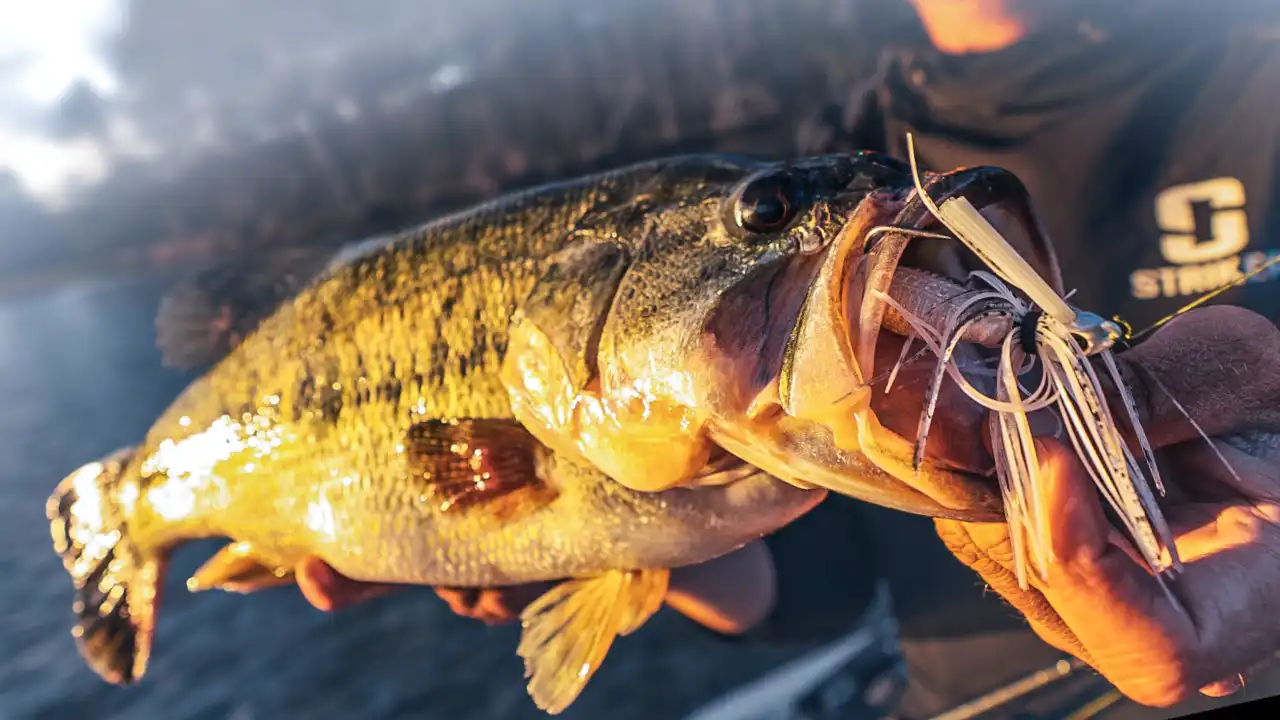Out of all the lures out there, a skirted bass just might be the best bass fishing lure. Interestingly, pro bass angler Kyle Welcher feels that most jigs get a similar amount of bites despite variations of colors, profiles and trailers. Welcher discusses how to choose bass jigs based on jig design attributes that enhance fishability and his hook-to-land ratio in different situations.
Selecting the perfect bass jig isn’t possible without considering design details. For Welcher, the best bass jig for the situation is more about elements such as hook gap, jig head shape, and weed guard properties to maximize efficiency around certain cover types and how you’re fishing it. He shares the attributes he looks for in a jig to improve fishability and his hook-to-land ratio in different situations.
HOOK GAP
Welcher contests that the hook gap is hugely overlooked. He uses jigs where the hook point extends beyond the line tie, usually a quarter to a half inch. The more gap, the better with casting or swim jigs due to the reduced hook set angle. Increased gap minimizes obstruction when setting the hook so that the hook connects and buries with speed and relative ease.
JIG HEAD SHAPE
Choosing the right jig head design and style is essential when determining how to choose a bass jig. The wider head design of a football jig is optimal for dragging over rock and rubble, but Welcher rarely fishes this way. He prefers using jigs for pitching, swimming, casting and skipping. For skipping, he wants a jig with a smooth bottom that transitions to a broad and flat surface on the bottom of the head.
On the other hand, the best swim jig heads feature a more slender triangular head to come through cover with less fowling, while the weight-forward head design for grass jigs aids in punching through the cover.
WEED GUARD
There’s a tenancy to favor softer weed guards with the mindset that they’ll compress with less effort, leading to more hookups. When choosing bass jigs, Welcher prefers a stiffer weed guard to prevent fowling around cover. He fishes all of his jigs on a powerful medium-heavy rod with a strong braid or fluorocarbon and has little issue driving the weed guard down. Additionally, he wants a jig with a small gap between the weed guard and hook point, as it reduces the distance you need to drive the weed guard down to connect the hook with the fish. A small gap also reduces fowling by preventing cover like grass or brush from getting between the weed guard and the hook.
MISCELLANEOUS
Welcher strongly recommends inline line ties when fishing swim jigs. The inline design is more streamlined to aid in coming through cover. And he doesn’t skimp on the hook, preferring heavier gauges in 4/0 or 5/0 hook sizes. A jig hook should never flex or bend out. Apply Welcher’s guidance to help you choose bass jigs specific to your fishing situation — it’s bound to improve your success.
FEATURED JIGS
- BASS FISHING JIGS Buy at Tackle Warehouse
- GENERAL PURPOSE JIG (skipping) Untamed Tackle Ace Jig Buy at Tackle Warehouse
- SWIM JIG – Untamed Tackle Apex Swim Jig Buy at Tackle Warehouse
- FOOTBALL JIG Buy at Tackle Warehouse
- ALL Untamed Jigs Buy at Tackle Warehouse
ROD SETUP
- ROD – 13 Fishing Envy Black 3 Casting Rod, 7’3″ MH Buy at Tackle Warehouse
- REEL – 13 Fishing Inception Casting Reel, 8.1:1 Buy at Tackle Warehouse












